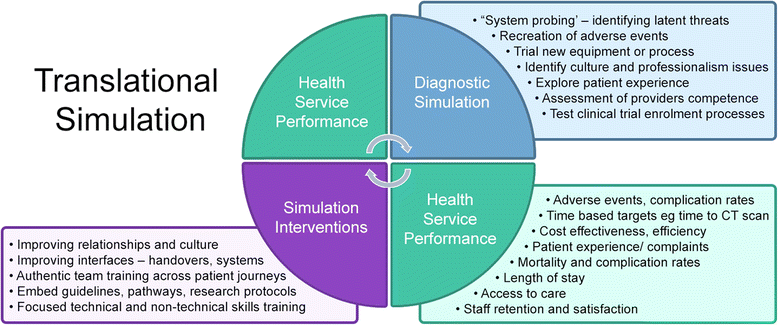Translational simulation: not 'where?' but 'why?' A functional view of in situ simulation
- PMID: 29450021
- PMCID: PMC5806247
- DOI: 10.1186/s41077-017-0052-3
Translational simulation: not 'where?' but 'why?' A functional view of in situ simulation
Abstract
Healthcare simulation has been widely adopted for health professional education at all stages of training and practice and across cognitive, procedural, communication and teamwork domains. Recent enthusiasm for in situ simulation-delivered in the real clinical environment-cites improved transfer of knowledge and skills into real-world practice, as well as opportunities to identify latent safety threats and other workplace-specific issues. However, describing simulation type according to place may not be helpful. Instead, I propose the term translational simulation as a functional term for how simulation may be connected directly with health service priorities and patient outcomes, through interventional and diagnostic functions, independent of the location of the simulation activity.
Keywords: Healthcare simulation; In situ simulation; Quality improvement; Translational science.
Conflict of interest statement
A formal ethics waiver was granted by the Gold Coast Hospital and Health Service Human Research Ethics Committee (reference HREC/16/QGC/185) for review and publication of the case study data.The consent for publication was included in the ethics waiver granted by the Gold Coast Hospital and Health Service Human Research Ethics Committee (reference HREC/16/QGC/185).The author declares no competing interests.
Figures
References
-
- Gaba DM. The future vision of simulation in healthcare. Simul Healthc. 2004;13(Suppl 1):i2–i10. - PubMed
-
- Timing, Tribes and STEMIs: Intensive care network. 2014. http://intensivecarenetwork.com/brazil-victoria-timing-tribes-and-stemis/ Accessed 21 July 2017.
LinkOut - more resources
Full Text Sources
Other Literature Sources



